"World's Largest Offshore Wind Farm-Maker Crashes Most On Record After Catastrophic Results"
"Ørsted: energy group struggles to divine which way wind’s blowing" – FT
The following is a compilation of some of the financial and other woes which Danish offshore wind developer, Ørsted has and is experiencing. This includes long-standing problems with Siemens Gamesa industrial wind turbines which novice developer, Bute Energy plans to use for proposed Twyn Hywel Energy Park with 14 x 200m tall turbines, along with its 20 or so other projects.
Image: Building a Sustainable Brand: The Ørsted Story by WorksDesign • 2 Nov 2017
World's Largest Offshore Wind Farm-Maker Crashes Most On Record After Catastrophic Results
By Tyler Durden • Wednesday, 30 August 2023 • ZeroHedge
Shares of the world's largest offshore wind farm developer crashed in Copenhagen trading on Wednesday after it warned: "The situation in US offshore wind is severe."
Orsted A/S was hit with a massive 16 billion Danish kroner ($2.3 billion) impairment on its US portfolio due to snarled supply chains, soaring interest rates, and easy money tax credits drying up -- a warning sign the green energy revolution bubble is in trouble.
CEO Mads Nipper warned investors on a conference call: "The situation in US offshore wind is severe."
Shares in Denmark-listed green energy giant crashed 25%, the largest daily decline since it went public in early 2016.
Bloomberg explained more about the headwinds plaguing Orsted:
The company's Ocean Wind 1, Sunrise Wind, and Revolution Wind projects in the US are being hurt by supplier delays, which could lead to writedowns of up to 5 billion kroner, it said late Tuesday. High interest rates could also add another 5 billion. In addition, the developer is still in talks with federal stakeholders to qualify for additional tax credits, which haven't progressed as expected. If unsuccessful, it could lead to impairments of as much as 6 billion kroner.
Analysts at Bernstein warned clients in a note: "Today's announcement flags risks in the US portfolio and does not do anything to improve the downbeat investor sentiment on the stock."
"While the bulls could argue many of these issues related to the impairment are already known, the announcement is unlikely to bode well for an already-weakened Orsted share price," Citigroup Inc. analyst Jenny Ping told clients.
Analysts across the board were overwhelmingly pessimistic about the news (list courtesy of Bloomberg):
BNP Paribas Exane (cut to neutral from outperform)
The potential write-down of DKK16b dwarfs the DKK2.5b impairment announced in January, analyst Harry Wyburd writes in a note
Investor confidence will probably be "compromised" for some time
UBS (buy)
Sam Arie puts the focus on which targets will remain valid in this context
Says today's announcement is a negative and somewhat of a surprise
Adds investors may be concerned in the change in tone since the June CMD where management seemed more confident in regulatory changes that would help to protect the return profile of these US projects
Jefferies (buy)
The update is a "clear negative," analyst Ahmed Farman (buy) writes in a note
The impairments are equivalent to as much as ~7% of the Danish power generator's market capitalization
Still, Jefferies says recent share price weakness suggests the market hasn't priced in "much value" in the company's near- term US offshore pipeline
RBC (sector perform)
Alexander Wheeler also calls it a clear negative, with further doubt cast on the overall outlook for US projects, which many believed had been resolved at the capital market day
With ~$4bn invested in the US projects to date, the impairment of up to DKK 16bn ($2.4bn) represents just over half of the overall value
The DKK5b supplier charge is believed to be the maximum number, while on interest rates, if rates stay at current levels then the DKK 5b will be the impact booked at 9M
We ought to label Orsted's crash as the 'Green Panic.' Bulls eager to ride the climate energy revolution might want to rethink their mid-term views.
The following is how FT reported on Ørsted’s ongoing challenges.
Ørsted: energy group struggles to divine which way wind’s blowing
Published by FT • 30 August 2023
Wind energy offers clean, renewable power for decades to come. The catch is that it may not be profitable. That is what Ørsted, the Danish wind power generator, told the market on Tuesday evening. Its US projects off the Atlantic coast will require impairment charges of up to DKr16bn ($2.3bn). The share price collapsed by a fifth on Wednesday.
Ørsted has a bad habit of springing negative surprises concerning everything from low wind speeds to power price hedging. That suggests there may be a foresight deficit in the C-suite.
This time, chief executive Mads Nipper blamed supplier delays (potentially costing DKr5bn), higher interest rates (DKr5bn) and lower than expected US investment tax credits (DKr6bn).
This month he moaned about a lack of economic offshore wind projects. Despite moderating inflation, input costs for steel and copper remain about 40 per cent above those from 2019, says Citi.
At Ørsted’s investor day in June, Nipper anticipated receiving the full 40 per cent investment tax credit on applicable US project investments. This assumption has now been cut to 30 per cent. Perversely, the US Inflation Reduction Act gets the rap, for local content requirements. Yet the US Treasury had laid these out weeks before.
Considering US wind projects will account for less than 15 per cent of Ørsted’s 205 gigawatts of total offshore capacity by 2030, these northeastern Atlantic projects have caused more than their share of headaches. By last year, Ørsted had already impaired its offshore New York Sunrise project by DKr2.5bn.
At what point might Ørsted give up on its US projects? Having acquired Deepwater Wind from DE Shaw back in 2018 for $510mn, it has already sunk a big bet. Ørsted has yet to give a final investment decision on its US projects. These should occur late this year, or early 2024.
Much damage is already priced in. The worst-case scenario is that impairments account for under 7 per cent of market cap versus a drop of three times that on the day.
The share price has gone nowhere since late 2018. Renewable energy still has a great future. But investors should consider vehicles other than Ørsted, given its mis-steps.
For the record, I do not at all agree with the mantra that “wind energy offers clean, renewable power for decades to come” given the reality of The Dark Side of Green Energy, Toxic Blade Time Bomb, the Annual Slaughter of Millions of Bats by Onshore Wind Turbines, Diving Seabird Numbers Plunge 90% near Offshore Wind, the deaths of whales, dolphins and other sea creatures and so much more harm they cause to ecosystems.
In April 2023, RenewablesNow reported the following problem with one of Ørsted’s offshore wind turbines manufactured by Siemens Gamesa.
One turbine's blades fall off at Ørsted's Danish offshore wind farm
By Sladjana Djunisic • 6 April 2023 • RenewablesNow
Image: Offshore wind turbine technician being lifted. Source: Ørsted A/S
Ørsted A/S (CPH:ORSTED) said today that a rotor with all three blades split from the turbine's nacelle and fell into the sea at its 400-MW Anholt offshore wind farm in Danish waters.
The incident is still being investigated, but so far nothing has pointed to a systemic cause, the Danish offshore wind major said. No injuries were reported.
The affected wind turbine is from the Siemens Gamesa 3.6 MW-4 MW family, one of 111 Siemens Gamesa turbines that make up the Anholt wind farm.
Ørsted said that it is taking extra precautionary measures, and is requesting that the relevant authorities establish “no-sail zones” at all of its offshore wind farms that have the same turbines as the ones installed at Anholt.
A no-sail zone was established at Anholt, but also at West of Duddon Sands, Lincs, Gunfleet Sands, Burbo Bank and Walney 1 & 2 in the UK waters, Borkum Riffgrund 1 in Germany, and Avedøre Holme in Denmark.
“The assets continue to operate as normal with the relevant safety protocols, and customers in the relevant markets will not be affected”, Ørsted said.
The Anholt offshore wind farm was commissioned in 2013.
It is important to note that The Times reported about the problems Ørsted was having with the Sieman Gamesa turbines in March 2018.
Hundreds of offshore wind turbines in UK waters need emergency repairs after they started eroding within a few years of being installed.
Owners of the 175-turbine London Array wind farm off Kent, the biggest offshore farm in the world, and the 108-turbine West of Duddon Sands wind farm off Cumbria have applied to the Marine Management Organisation for permission to carry out urgent repairs.
The London Array was completed in 2013 and West of Duddon Sands a year later. Both use a type of turbine made by Siemens Gamesa, which has admitted that the leading edge of the blades — the part that slices through the air when the turbine turns — is being eroded much faster than expected on some of the machines. A spokesman said that various factors including the “wind speed, the rotor configuration, the amount of rain, and even the size of raindrops” were thought to be behind the problem.
The UK has more offshore wind farms than any other country after supporting their construction with generous renewable energy subsidies to help to meet climate change targets. More than 1,600 turbines operate in UK waters, but critics have long questioned how reliable they will prove in the harsh conditions offshore.
If the issue with the Siemens Gamesa turbines proves symptomatic of a wider problem, it could undermine the economics of building wind farms.
The type of turbine known to be affected has blades spanning a 120-metre diameter. When installed they were among the biggest used offshore. The tips of the giant blades move more quickly through the air than in earlier, smaller models, which may have contributed to the erosion.
Siemens Gamesa said that it had installed more than 950 of the affected model worldwide, but was unable to confirm the number in the UK. Orsted, the Danish company that co-owns both London Array and West of Duddon Sands, said that it was also assessing four other wind farms that used a similar specification of turbine.
Far bigger turbines are now being installed but Siemens Gamesa said that they should not be affected because the potential for the leading edges to erode was identified in 2014 and all machines installed since had extra protection. [Bold mine.]
Siemens Gamesa said that it would carry out “performance upgrades”.
The affected blades were made in Denmark with glass fibre and balsa. The repair involves glueing a 3mm rubber-like shell onto the damaged areas. The blades are likely to be removed to carry out the repairs.
Work on both wind farms is due to start next month and could take from one to three years. The companies refused to disclose the costs of the repairs, expected to stretch to tens of millions of pounds. They said that consumers would not face any costs.
John Constable, a long-term critic of wind farm costs who writes for the climate-sceptic Global Warming Policy Forum, said: “If this is a part of a general phenomenon, then the implications for the economic viability of wind power in general are very serious.”
A spokesman for Orsted said the problem would not result in any “noticeable impact on the continuing production of clean, green electricity”.
Incidentally, whilst I was reviewing the voluminous documents in the massive planning file for novice developer Bute Energy’s Twyn Hywel Energy Park DNS/3272053 in an ancient landscape in South Wales with multiple bronze age and older heritage assets which must be protected, along with coal tips, endangered species and many other issues with settled communities close by, I took a screenshot of the Siemens-Gamsea industrial wind turbine Bute plan to use if they are granted planning permission by the Welsh Minister for Climate Change, Julie James. It is notable that Bute Energy has never before constructed a single wind turbine.
The flaws in one of Ørsted’s Siemens Gamesa wind turbines comes as no surprise given the problems which have been reported with these turbines since the dramatic drop in the value of Siemens’ shares in June 2023.
Please see the following previous posts for related information.

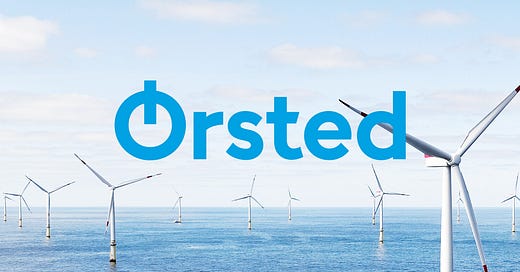





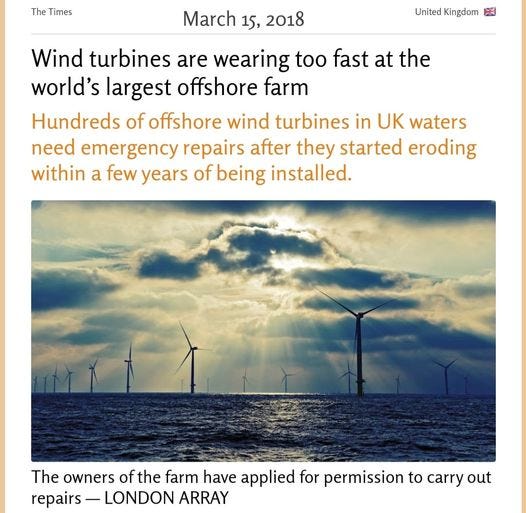

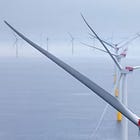

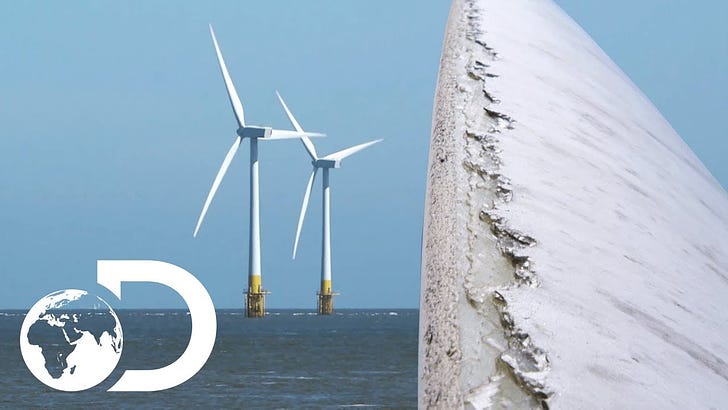

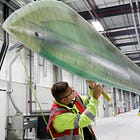

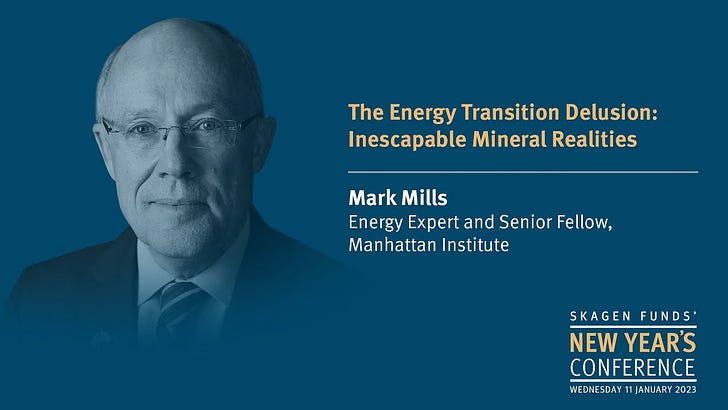
YAHOOOOOOO!!!!!!!!!!!!!!!!!!!!!!!!!!! May they tank, along with this entire clean energy hoax!